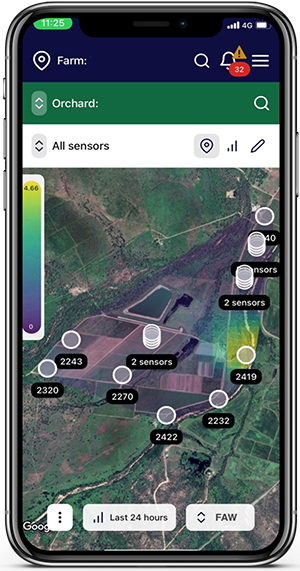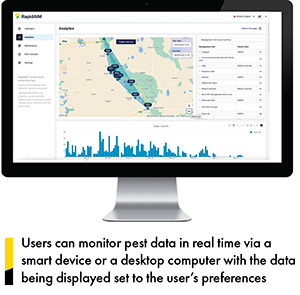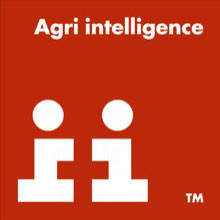The system will improve crop protection by enabling more targeted use of insecticides, which is considered especially important to support the performance of biologicals, as these often require precise timing to optimise efficacy.

The system is being brought to the UK by UPL but will be available exclusively through Agrii. Following its assessment in orchards across Kent and East Sussex during 2023 and 2024, it will be available nationally from 2025 following a formal launch to growers this autumn.
RapidAim differs from the pheromone-traps growers are likely to be more familiar with as it is not a trap but a monitoring station arranged as a connected network. Data on moth numbers is collected as the insect passes through the device. The data is then transmitted to the user’s account every 30 minutes. The account holder will be able to view the data via a dashboard on a smart device such as a smartphone or tablet. The grower will have oversight across their own network of devices with the data enabling them to fine-tune insecticide timings for optimal performance.
RapidAim offers a more accurate and reliable form of monitoring codling moth populations, says Don Pendergrast, Agrii technical manager for non-combinable crops.
“Unlike other systems, RapidAim does not rely on images captured on a semi-regular basis during the day. Nor does it require data-hungry services such as the 4G mobile phone network. Instead, it uses an algorithm to identify the pest being monitored before relaying the information via the narrow-band mobile network. This supports excellent connectivity and means RapidAim does not suffer the connectivity issues often experienced in rural areas,” Mr Pendergrast says.
The RapidAim stations should be arranged on a grid system and located on the outer boundary of the orchard with one device for every 3ha of trees.
In 2023, the first year of trials, RapidAim units were situated in orchards across Kent. The trial expanded in 2024 to include Sussex. Brendan Rhodes, Agrii fruit agronomist who has overseen the field trials of the past two seasons, says there are now more than 60 units in place with some of the leading commercial growers in the region.
“We have spent the past two seasons assessing and validating its capabilities with a network of growers across Kent and Sussex. Those users who trialled it reported that the data presented was consistent with the pest numbers they were seeing in orchards and, perhaps reassuringly, more accurate than indicated by pheromone traps,” Mr Rhodes says.
As part of the evaluation process, the RapidAim units were matched with Delta Traps located as per industry standards.
“The results have been highly encouraging. It quickly gained the trust of the growers involved who recognised the value of real-time data in supporting crop protection strategies,” Mr Rhodes adds.
For Stuart Jackson, UPL’s head of technical services, the introduction of RapidAim represents a decision support system fit for the digital era.
“RapidAim is not a direct form of control, but a risk-management tool. It enables control measures to be highly targeted while enabling growers to demonstrate the justified use of insecticide products,” Mr Jackson says.

“It can also be used as a validation tool. Post-application populations can be monitored to determine if further applications are required or if the activity so far has been sufficient,” he adds.
About RapidAim
RapidAim uses technology initially developed by the Commonwealth Scientific and Industrial Research Organisation (CSIRO), Australia’s national science agency, to improve targeted control of fruit fly. Following its commercial success, the model was adapted for codling moth at the request of growers. It has since been adopted in the major apple growing regions of the world, including New Zealand and Washington State in the USA.
The codling moth algorithm is now a well-defined capability. An algorithm for vine moth is being trialled with Agrii this season and an algorithm for diamond backed moth is expected for assessment in 2025.
Vineyard Show 20th November 2024 | Stand M59
Agrii will be attending the Vineyard Show at Kent County Showground later this year, visit us on stand to:
- Meet experienced vine specialists providing advice, information and resources on how Agrii can support your vineyard business
- Chat to us about ancillary products, agronomy, nutrient management programmes, cover crop selections, variety choices and much more



